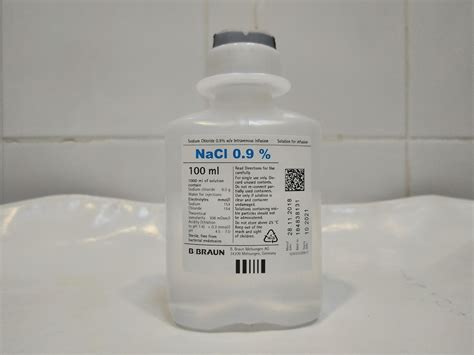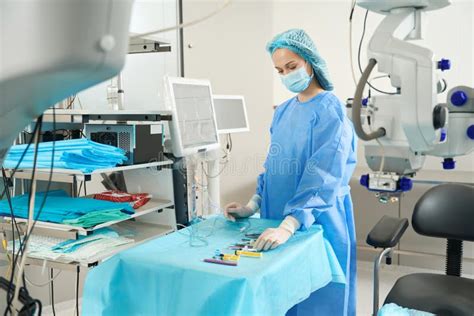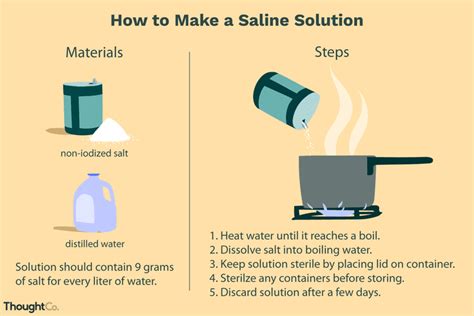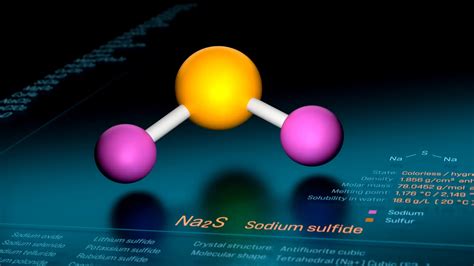Intro
Making saline solutions is a crucial skill for various applications, ranging from medical uses to contact lens care. The process involves mixing salt and water in specific proportions to achieve the desired concentration. Understanding how to make saline solutions safely and effectively is essential for maintaining hygiene and preventing infections. In this article, we will delve into the importance of saline solutions, their applications, and provide a step-by-step guide on how to make them.
Saline solutions are isotonic, meaning they have the same concentration of salt as human tears and bodily fluids. This characteristic makes them ideal for cleaning wounds, rinsing contact lenses, and even as a nasal spray to relieve congestion. The simplicity of making saline solutions at home has led to their widespread use in first aid kits and for personal hygiene. However, it's crucial to follow the correct procedure to ensure the solution is safe and effective.
The primary component of a saline solution is sodium chloride (salt), which is mixed with distilled or boiled water. The ratio of salt to water is critical and must be carefully measured to achieve the desired concentration. For most applications, a 0.9% saline solution is recommended, which is equivalent to 9 grams of salt per liter of water. This concentration mimics the natural balance of bodily fluids, making it gentle on tissues and effective for its intended purposes.
Understanding Saline Solutions

Before making a saline solution, it's essential to understand its components and the equipment needed. Sodium chloride is the primary ingredient, and it's crucial to use pure salt without additives. The water should be distilled or boiled to remove any impurities that could contaminate the solution. A clean environment and equipment are also vital to prevent bacterial growth in the solution.
Applications of Saline Solutions
Saline solutions have a wide range of applications, from medical to personal care. They are used to clean wounds, reducing the risk of infection and promoting healing. For contact lens wearers, saline solutions are essential for rinsing and storing lenses, helping to maintain eye health. Additionally, saline nasal sprays can provide relief from congestion by moisturizing the nasal passages and loosening mucus.Preparing the Equipment

To make a saline solution, you will need a few basic pieces of equipment. A clean glass or plastic container with a lid is necessary for mixing and storing the solution. A measuring cup or scale is required to accurately measure the salt and water. It's also helpful to have a spoon or stirrer for mixing the solution thoroughly.
Measuring Ingredients
Measuring the ingredients accurately is crucial for making an effective saline solution. For a 0.9% solution, you will need 9 grams of salt per liter of water. This can be scaled down for smaller quantities, but the ratio must remain the same. It's a good idea to use a digital scale for precise measurements, especially when making smaller batches.Making the Saline Solution

Making a saline solution involves dissolving the measured salt in water. Here are the steps to follow:
- Boil the water to remove any impurities and let it cool slightly.
- Measure the salt according to the desired concentration.
- Slowly add the salt to the water, stirring until it's completely dissolved.
- Continue stirring until the solution is clear and there are no visible salt crystals.
- Allow the solution to cool to room temperature before use.
Tips for Making Saline Solutions
When making saline solutions, it's essential to follow a few tips to ensure safety and effectiveness: - Always use pure sodium chloride without additives. - Use distilled or boiled water to prevent contamination. - Measure the ingredients accurately to achieve the correct concentration. - Store the solution in a clean, airtight container to prevent bacterial growth. - Label the container with the date and concentration of the solution.Applications and Precautions

Saline solutions have various applications, but it's crucial to use them correctly and with caution. For medical purposes, always consult with a healthcare professional before using a saline solution, especially for wound care or as a nasal spray. For contact lens care, follow the manufacturer's instructions for rinsing and storing lenses.
Common Mistakes to Avoid
When making and using saline solutions, there are a few common mistakes to avoid: - Not measuring the ingredients accurately, leading to an ineffective or potentially harmful solution. - Using contaminated water or equipment, which can lead to bacterial growth and infection. - Not storing the solution properly, allowing it to become contaminated or expire.Conclusion and Future Directions

In conclusion, making saline solutions is a straightforward process that requires attention to detail and the right equipment. By understanding the importance of saline solutions, their applications, and how to make them safely, individuals can take a proactive approach to their health and hygiene. As research continues to uncover the benefits and potential applications of saline solutions, it's essential to stay informed and adapt to new findings and recommendations.
Final Thoughts
The simplicity and effectiveness of saline solutions make them an indispensable tool for various aspects of health and personal care. Whether for wound care, contact lens maintenance, or relieving nasal congestion, saline solutions offer a safe and gentle approach. By following the guidelines and precautions outlined in this article, individuals can confidently make and use saline solutions, contributing to a healthier and more informed community.What is the correct concentration for a saline solution?
+A 0.9% saline solution, which is equivalent to 9 grams of salt per liter of water, is the standard concentration for most applications.
How should I store a homemade saline solution?
+Store the solution in a clean, airtight container and keep it in the refrigerator to prevent bacterial growth. Always label the container with the date and concentration of the solution.
Can I use tap water to make a saline solution?
+No, it's recommended to use distilled or boiled water to remove any impurities that could contaminate the solution.
We invite you to share your experiences and questions about making and using saline solutions in the comments below. Your feedback and insights can help others understand the importance and versatility of saline solutions in maintaining health and hygiene. Whether you're a healthcare professional, a contact lens wearer, or simply someone interested in natural health remedies, your contribution to the discussion can enrich our understanding of this valuable resource.
